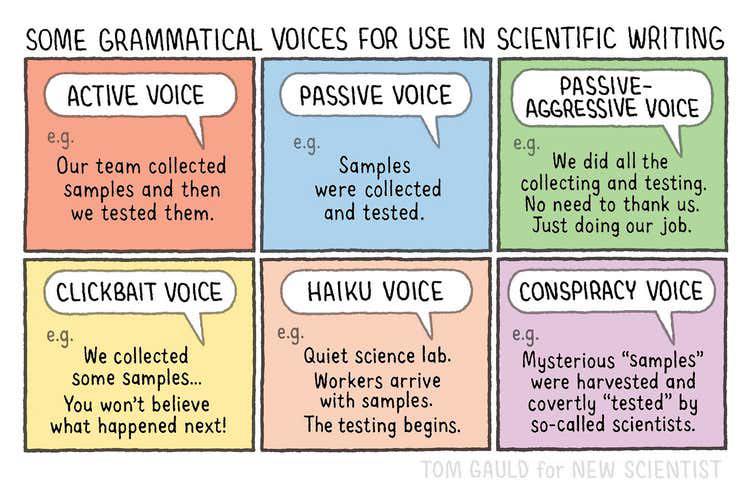In technical & scientific communication, the voice you choose affects how readers perceive your work. Although we typically focus on active and passive voice, this week we are having a little fun exploring additional “voices” too!
Take a look at this comic by Tom Gauld for New Scientist:

Notice the differences:
- Active Voice: Clear and direct (“Our team collected samples.”)
- Passive Voice: Objective and often used for formal reporting (“Samples were collected.”)
- Passive-Aggressive Voice: Adds unintended tone (“No need to thank us.”)
- Clickbait Voice: Creates suspense (“You won’t believe what happened next!”)
- Haiku Voice: Minimalist and poetic (“Quiet science lab.”)
- Conspiracy Voice: Casts doubt (“Mysterious ‘samples’ were harvested.”)
For your writing, focus on using active voice unless you have a clear reason to choose otherwise. Active voice usually makes technical documents stronger, clearer, and more engaging for your audience.
Mini-Challenge: Try rewriting one of your own sentences in each of the six voices above—just for fun! Add it here as a comment.